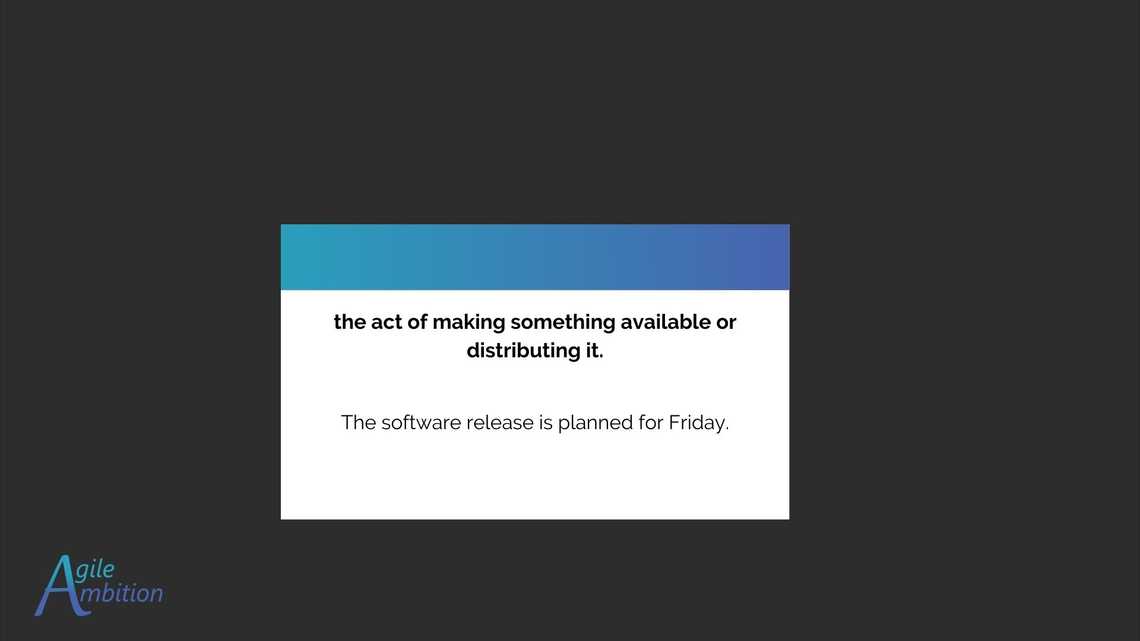Release

Definition of Release
A Release is the act of making something available or distributing it.

Pronunciation Spelling
rih-LEES
Example Sentence
The software release is planned for Friday.
Significance
Agile practitioners should be familiar with “release” because it is a pivotal element in the Agile mindset. Releases are fundamental checkpoints allowing for incremental delivery of product functionality. They enable Agile teams to gather valuable feedback from end-users and stakeholders regularly, facilitating a continuous improvement cycle.
By planning and executing releases, Agile practitioners can effectively manage project timelines, mitigate risks, and prioritize features that provide the most value to customers. Furthermore, releases promote transparency and communication among team members and stakeholders, aligning everyone’s expectations regarding when new features or improvements will be available.
Frequently Asked Questions (FAQs)
How Many Sprints Are in a Release?
Releases can be date-driven or feature-driven, allowing flexibility in sprint count. Certain teams even adopt continuous release practices, allowing for multiple releases within a single Sprint.
Who Is Responsible for Release in Agile?
The Product Owner in Agile is tasked with deciding when the increments meet the release criteria, based on date or scope objectives. However, it’s the developers who carry out the testing, integration, and deployment. This delineation of roles underscores a pivotal division of labor, where strategic release decisions and technical execution interlock to drive the product forward.
Can a Release Have Multiple Sprints?
In Agile approaches, a release can indeed encompass multiple sprints, allowing teams to integrate and deliver work incrementally. This multi-sprint approach enables continuous improvement and adaptation.
At the close of every Sprint, Scrum dictates the delivery of a potentially releasable increment. The Product Owner can withhold this increment from being released, yet the developers still assimilate the advancements into the product. Teams often employ strategies such as feature flags to ensure everything meets the Definition of Done, including integration, even if not immediately released.
Additional Resources
Share
Table Of Contents
Buy Me a Coffee
Are you gaining value and insights from Agile Ambition? If you love what you're learning and want to see more, here's a simple way to show your support. Click the "Buy Me a Coffee" button to make a small donation. Each coffee you buy fuels our journey to discover better ways of working by unpuzzling Agile, one piece at a time.
Buy Me a CoffeeQuick Links
Legal Stuff

